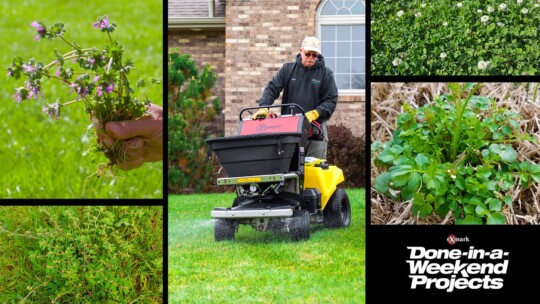Everyone loves a garden full of flowers. But did you know that there’s a way to grow even more without having to spend an extra cent? Tune into this episode of Backyard Smart and get the lowdown on deadheading flowers!
For most flowers, reproduction is the name of the game. As they grow, they tend to lose their luster, channeling their energy towards producing new seeds rather than new petals. And even after they’ve dropped their seeds, any dead blooms that are left barely hanging onto the stem continue to sap away every remaining ounce of nutrition to survive—nutrition that otherwise would have been directed into producing a fresh array of flowers.
What is Deadheading?
Simply put, it’s the act of removing dead flowers from their stems. While it might seem tedious, it goes a long way towards helping your garden stay vibrant, all summer-long. The process channels energy towards flower growth, instead of seed creation, resulting in beautiful, continual blooms and overall heathier plants. In fact, it benefits the gardener as much as the flower. Many have found the repetitive, almost mindless nature of deadheading to be meditative and therapeutic, and a great way to wind down from a long day of work.
And, routine deadheading helps prevent unwanted seedlings—called volunteers—from popping up in your garden and causing chaos in your beds.
When to Deadhead Flowers
For the majority of flowers, you don’t have to worry about the time of year when it comes to deadheading—this is a process that happens from spring to fall. When you see a flower start to fade (i.e., starting to lose their color and wilt), it’s time to pinch. And, if the stem of a plant has multiple blooms, it’s always best to wait until approximately 70% of the blooms have faded, in order to encourage the healthiest growth.
How to Deadhead a Flower
Regular deadheading helps almost all annuals thrive, and the process is simple—all you need is your thumb, forefinger, and some knowhow. (Or, to make the process a bit easier on your fingers, a small pair of garden snips works wonders.) Once located, just pinch (or snip) off the stem below the spent flower and right above the first full set of healthy leaves. The bloom should snap right off when it’s ready; however, if it doesn’t easily give way don’t try to force it—this means the flower isn’t ready to be deadheaded.
Of course, like all things, there are a few exceptions to the rule to be aware of.
Deadheading Pitfalls
When it comes to deadheading, research is key.
Not all plants benefit from (or require) deadheading—some perennials have different deadheading needs than annuals. For example, some “mounding” perennials (or plants with a rounder appearance), respond best to “cutting back,” which is the process of shearing the entire plant back to two or three inches above the ground.
And, not all plants need to be deadheaded as often as others—this frequency can range from a few days to a few weeks, depending on the species—so it’s always best to know what you’re dealing with before you begin. So, get outside, keep a sharp eye, start deadheading plants, and Help Your Blooms Blossom.



